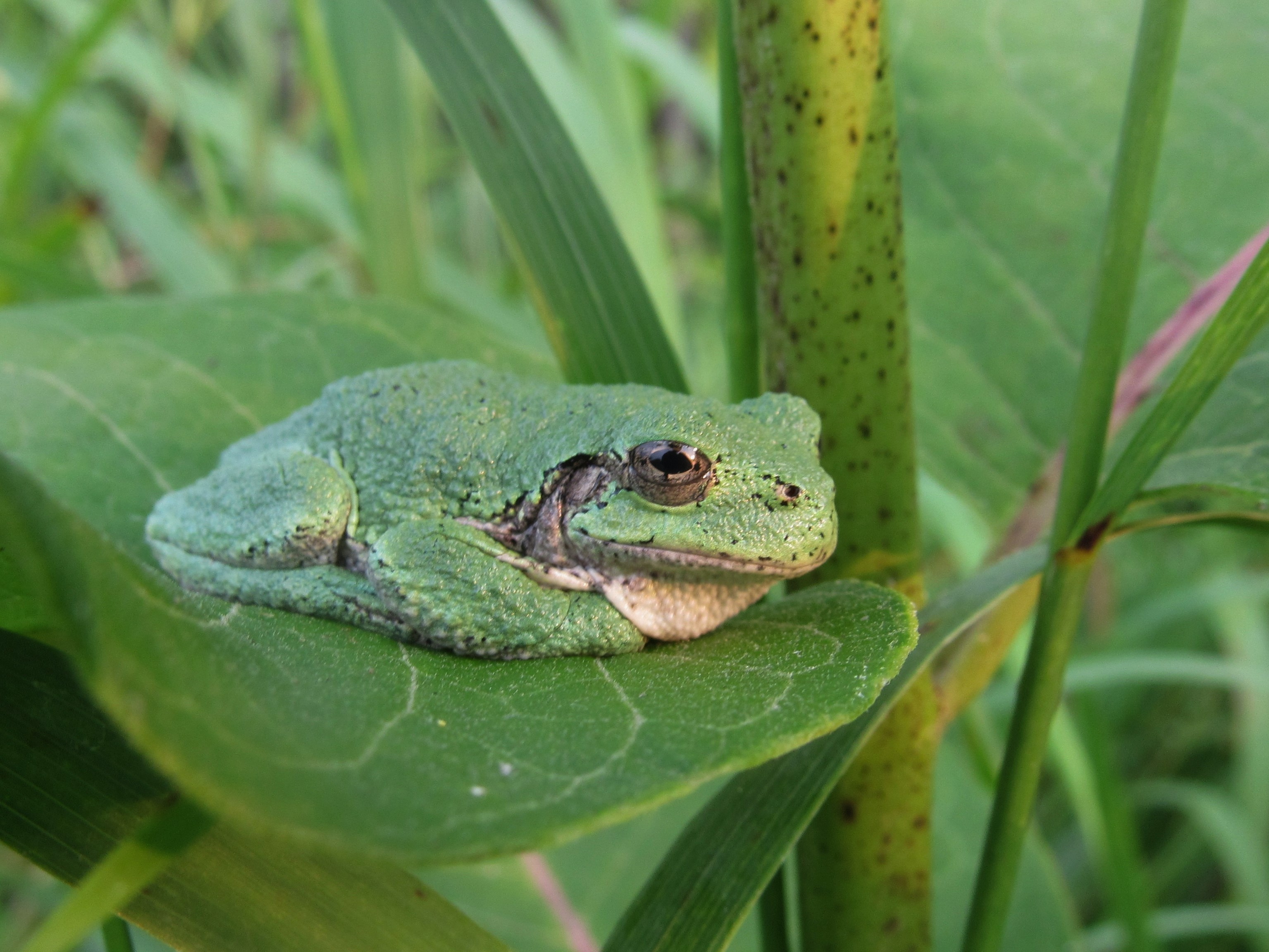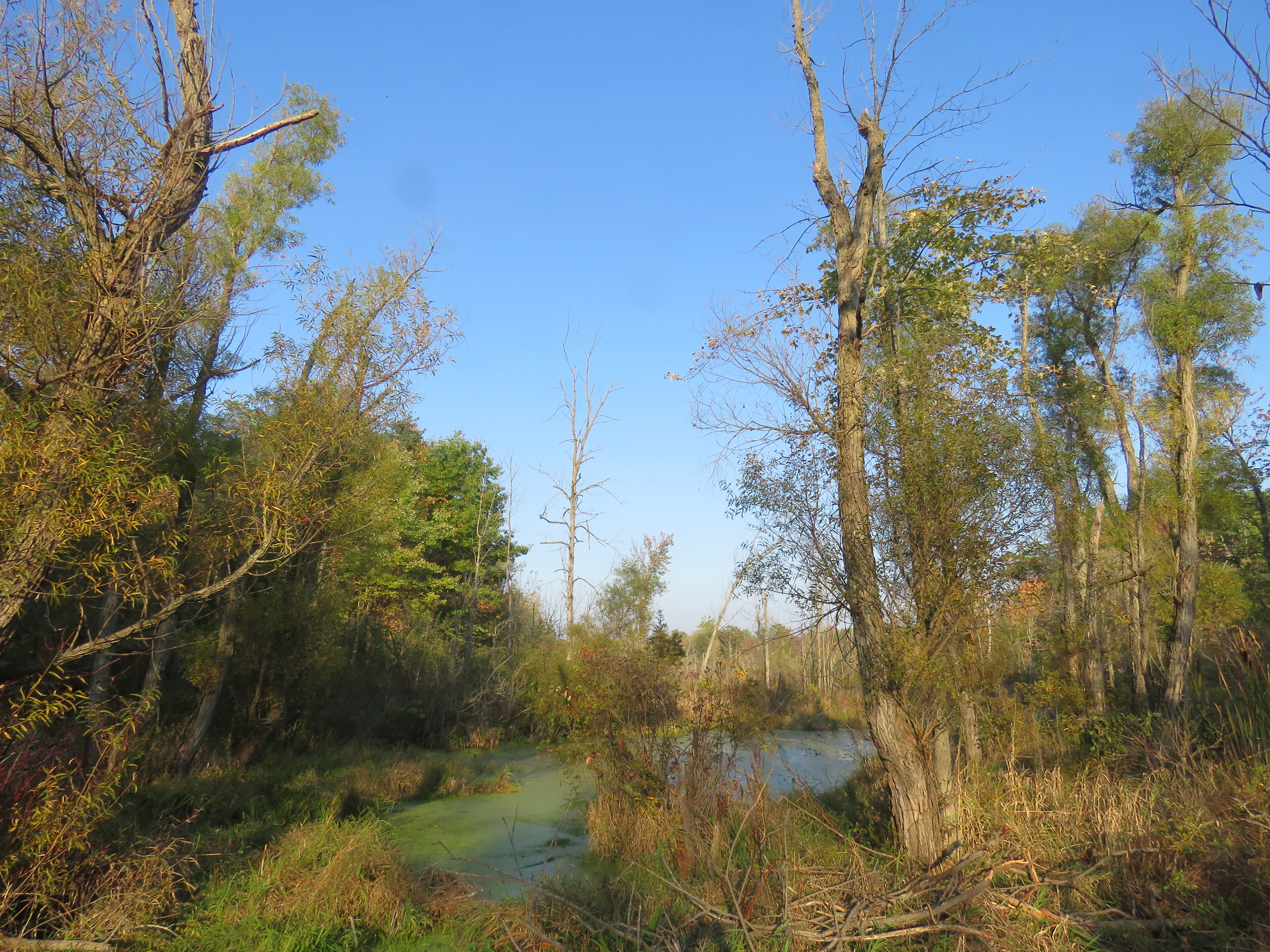WILDER SIDE OF OAKLAND COUNTY
Three weeks have raced by since the position of Planet Earth in relation to the sun signaled the autumn equinox; except during much of this week, we have been bathed in sultry summer-style heat with the mercury soaring into the 80s. Some of nature’s creatures became briefly “confused” and were stirred into off-season activity, with spring peepers sounding off from the edge of wetlands and well camouflaged gray treefrogs calling from moist foliage. A walk in the woods to the edge of my marsh reminded me of the timeless words of John Muir, “The clearest way into the Universe is through a forest wilderness” and got me thinking.

Muir’s right about that, but one need not travel north to our “Pure Michigan” forested wildernesses and shorelines of our Great Lakes to find the transient moments of wonder that showcase the ways of nature. They are right here, close to home, often at our feet if we just take the time to slow down and look. I liked to call these pockets of wildness the “wilderness of our little things.” And so earlier in the week, on a foggy morning that soon turned into a sultry summerlike day under a blazing sun and blue sky, I went exploring for our little things. Here’s just a sampling of what I found, without traveling far in a landscape I would call our wilderness of little things. And why the word “our” instead of “my?” That’s easy, for I share the landscape with creatures great and small. Accepting that fact of coexistence makes every walk in nature a pleasure.

Fungi continues to fruit, including my two autumn favorites: the colorful and much sought after Chicken of the Woods, and the soccer ball like Giant Puffball. A close look at the puffball showed little creatures had been nibbling at this wildland treat. A chipmunk paused its nut-gathering rounds, perhaps wondering why the two-legged beast was now kneeling down and staring at fungus. The rains also brought an emergence of the Amanitas, a beautiful yet poisonous species that is very much at home in Oakland County.
A garter snake slithered near me, perhaps on a hunt for worms or a wood frog out hunting for its meal before frosty evenings remind both species it’s time to think about hibernation. Meandering on from the woods to a field, I noted small insects exploring the petals of a second round of pale blue chicory blooms. I always smile when chicory appears, for their dried roots make an acceptable, although bitter, substitute for coffee. And not far from the chicory, sassafras leaves painted in their brilliant hues of orange and scarlet rattled in the afternoon breeze. Unlike chicory roots, which can easily be pulled by hand, a good trenching spade is needed for digging sassafras roots — don’t do this in a public park! About eight inches of root chopped up into small pieces, dried for a few days and then boiled will make about a quart of spicy tea: a satisfying almost forgotten drink from our wilderness of little things.
Thoreau wrote, “I enter a swamp as a sacred place.” I wondered how many people would walk by a marsh or swamp in the middle days of October and see nothing, and miss the wonder of our wilderness of little things. There’s a small pond not far from my house that is a portal to the ways of wildlife. Usually by this time in October, painted turtles have hunkered down in the muddy bottom of the pond, and then when ice begins to form the next month they slip into a hibernation like state. Not this week. Every log on the pond had turtles basking in sunlight under their autumn coats of duckweed; a sight that could easily be missed unless one paid close attention to the little things.

Cattails, soggy from rain and humidity, overlooked the marsh. In a few weeks, white-footed mice may scurry up the stalks to gather its dry “fluff” as nesting material, an act of gathering that will be repeated by songbirds next spring. The bright red berries of winterberry, a native holly that grows in wetlands, also drew my attention, and confirmed that autumn had truly arrived and the heat would pass.
After exploring the woods and wetlands I share with wildlife, I headed over to nearby Independence Oaks County Park–North to see what was stirring in that protected landscape as the morning dew dissipated. I barely left the parking lot when a spider web glistening with moisture at knee height drew my attention. A stunningly beautiful Banded Orb Weaver (Argiope trifasciata), remained motionless in her web — waiting, and not just waiting for a meal to fly into her web. These female garden spiders build their impressive webs not just to capture meals but also to attract a mate, for fall is their mating season. I wondered about her world and her wait as I meandered on through a field and did a bit of late season foraging for little things on the way to a bluff that overlooks Upper Bushman Lake: one of my favorite places of tranquility. Autumn olive berries glistened with moisture. I ate them. Wild grapes fell victim to my hike as well. After passing motionless bumblebees that appeared to have spent the night on the blossoms of late-blooming New England Aster, I ended my meander amidst our wilderness of little things under a red maple tree that was slowly giving up her leaves to the water’s edge.
The next time you hike a county trail, picnic in a park under a cascade of falling leaves, or just pause and lean against a tree to daydream for a moment after a woodland trail run, take the time to hone in to your surroundings and appreciate the wilderness of our little things. Whether you look at the little things of nature as controlled chaos, chaotic harmony or blessed peace makes no difference, for nature remains a soothing wilderness of often overlooked little things on the wilder side of Oakland County.

Jonathan Schechter is the Nature Education Writer for Oakland County Government and blogs weekly about nature’s way, trails, and wildlife on the Wilder Side of Oakland County
Looking for county news and events? Visit our website or follow along with us on Facebook, Twitter, LinkedIn, YouTube, Pinterest, and Instagram using #OaklandCounty.











